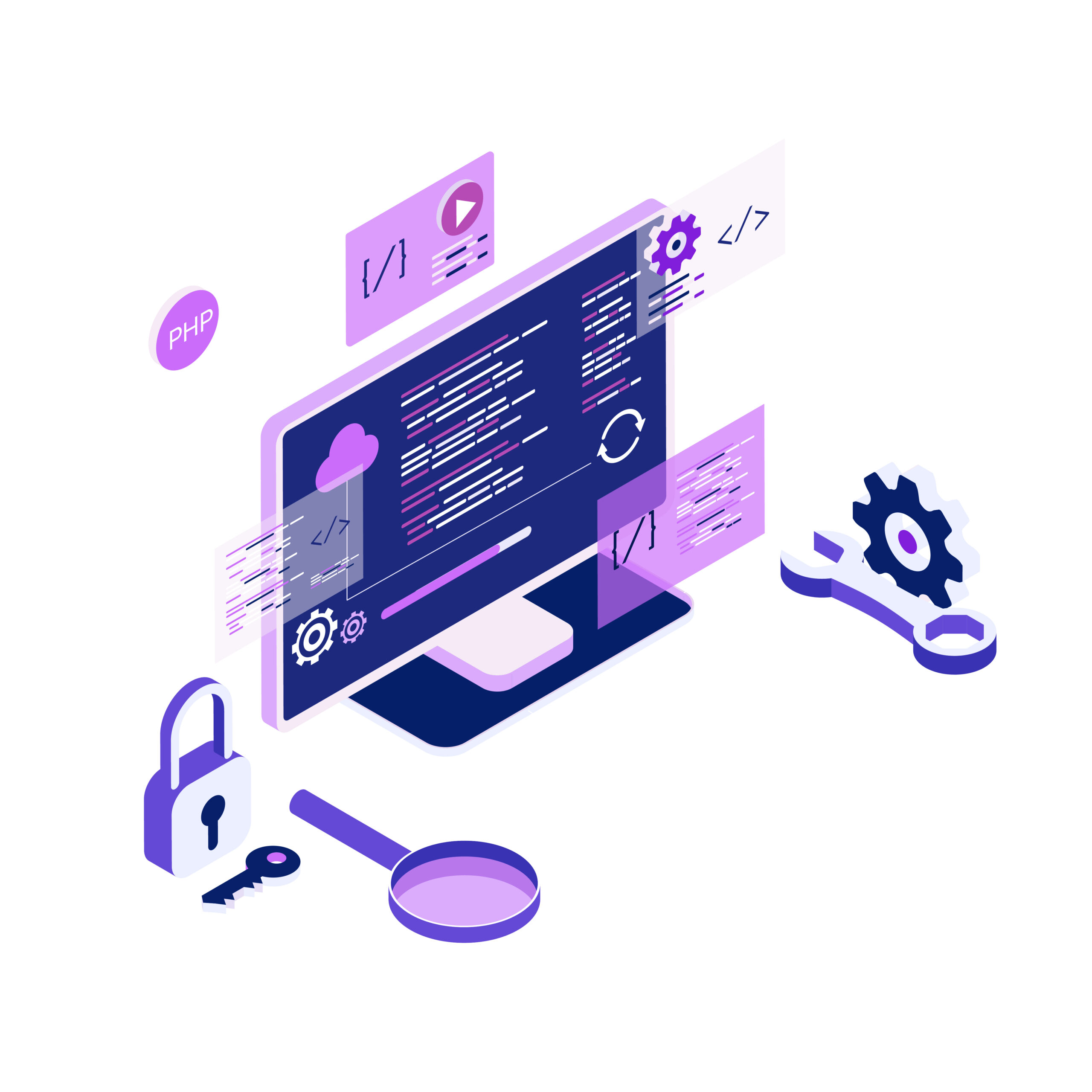Development Rails to Riches: Navigating the Labyrinth of Web
Ruby on Rails (RoR), an open-source framework, is a model of sophistication and viability in the perplexing universe of web development. Its strength in the digital sphere is proof of its continued importance as well as its immovable dedication to innovation and usability. This outlook-changing framework, which is additionally commonly known as Rails, has drawn in a steadily developing community of passionate developers and fans who are attracted to its appealing fusion of innovation and tradition. The way of thinking of the Ruby programming language, which puts a strong emphasis on the developer’s prosperity, lies at the core of Ruby on Rails features. It is evidence of the rich synergy that results from the intersection of far-reaching, modular architecture with exquisite, intelligible code. On account of its smooth, convention-over-configuration approach, Rails liberates developers from being required to burn through their inventive effort on monotonous framework setup and configuration tasks and permits them to concentrate on making robust, high-quality apps.
convention-over-configuration approach, Rails liberates developers from being required to burn through their inventive effort on monotonous framework setup and configuration tasks and permits them to concentrate on making robust, high-quality apps.
Rails’s well-established feature set, which prioritizes developer proficiency, is one of its primary selling focuses. This framework gives an overflow of tools and utilities that increment the developer’s capacity to accomplish more work with less time. It makes the muddled process of creating web applications less complex, taking into consideration the speedy construction of fully functional applications. Rails has a few implicit functionalities, including templating, routing, and database administration. The compelling creation of RESTful web applications is worked with by its well-designed standards, and the Model-View-Controller (MVC) design’s stunning code organization guarantees a restrained and coordinated way to deal with coding. In this memoir, we will delve into the features of Ruby on Rails, explore why it is still a good choice for web development and a comparison with other frameworks.
Rediscovering the Classics: Why Ruby on Rails Remains a Stalwart in Web Development
Ruby on Rails, frequently known as Rails, continues to be significant in the steadily impacting universe of web development, which is a monument to its unfaltering significance. While some could contend that this framework has lost a portion of its allure in the face of newer competitors, Rails continues to call with undiminished attraction. Various characteristics that put Ruby on Rails aside as a top option for web development in the cutting-edge digital environment are responsible for its enduring appeal. The extraordinary developer efficiency of Ruby on Rails is a critical perspective that supports its value. The basic programming language, Ruby, synergizes impeccably with the Rails framework to diminish the type of confounded code. Ruby has an instinctive and wonderful syntax. This consistent combination speeds up web application development by empowering quick development, update, and maintenance. These developer-friendly Ruby on Rails features resemble an enchanting song, tempting both inexperienced and seasoned devs.
This consistent combination speeds up web application development by empowering quick development, update, and maintenance. These developer-friendly Ruby on Rails features resemble an enchanting song, tempting both inexperienced and seasoned devs.
The addition of ActionText for rich-text content and Webpacker for overseeing JavaScript tools, among other ongoing enhancements and upgrades to Rails, further underscore its flexibility and dedication to modernity. Ruby on Rails’ pliability gives an upper hand in a digital environment described by quick evolution by effectively changing the changing prerequisites of current online applications. Another notable feature of Rails is its inclination for convention over configuration, which works with decision-making and rates up project launch. This moral methodology, upheld by a bunch of acknowledged rules, focuses on the light of viability, facilitating mental strain and advancing natural development processes. Additionally, the Ruby on Rails community is dynamic and supports a rich environment of frameworks, modules, and gems. This powerful environment outfits developers with a large number of tools, working on the extensibility of applications and smoothing out troublesome processes. Ruby on Rails is a steadfast monument to the engaging quality of well-designed, developer-centric frameworks in a world where technology is developing at a bewildering pace.
Code Versus Code: Ruby and the Framework Fisticuffs
Inside the huge range of programming languages and frameworks, discussions about Ruby frequently attract comparisons to other deeply grounded contenders like Python, Java, PHP, and Node.js. These languages are a constellation of fluctuated options, each with unique benefits and characteristics of its own. At the point when these laid-out languages are contrasted with Ruby, an interesting story of similarities and contrasts arises, tricking the astute developer with a great many open doors. Features of Ruby on Rails stand apart from its opponents with an unrivaled spotlight on programmer pleasure. Ruby is lauded for its delightful sentence structure and developer-centric demeanor. It cultivates an innovative and useful climate that goes beyond the tedious guidelines of languages like Java. Ruby’s unique nature empowers it to be adaptable and versatile, which is reflected in its runtime metaprogramming features.
With its developer-friendly syntax, Python is like Ruby and offers a wealth of tools and frameworks. Nonetheless, it invests wholeheartedly in a stronger, more traditional ecosystem and champions its critical position in AI, data analysis, and scientific computing. Contrarily, Ruby twists in the construction of online applications, reinforced by the capacities of Ruby on Rails, which improve project administration and design and make it a top option for anyone looking for fast and expressive web solutions. Java, broadly perceived for its versatility and cross-platform suitability, is utilized in online applications, mobile applications, and business solutions. Ruby moves smoothly in a powerfully composed, compact way, in contrast to Java’s embrace of static composing and verbose composition. In large, mission-critical systems, Java’s adaptability is used, while Ruby succeeds in the agile making of models and smaller to medium-sized projects.
PHP is a web development tool that is broadly utilized but in some cases treated condescendingly. It offers a hodgepodge of advantages. PHP ordinarily battles with security blemishes and inconsistencies, while being popular for its easy learning curve and web scripting capabilities. In contrast, Ruby on Rails envelops a more complete and contemporary framework, making developer productivity its core principle. To wrap things up, Node.js, the undisputed lord of asynchronous programming, demonstrates exceptional ability in server-side scripting, particularly for huge applications. But because of its single-threaded nature, concurrency should be painstakingly made due. Ruby, on the other hand, utilizes the Ruby runtime’s event-driven design and multithreading abilities to give speed and versatility while utilizing little resources.
Gems in the Code Crown: Features of Ruby on Rails
As a forerunner in the unique web development space, Ruby on Rails has forever been evolutionary, always improving its list of capabilities to satisfy new needs and standards. This revered structure has as of late undergone various changes that have expanded its allure and made it simpler to build reliable, high-performance online apps. Action Mailbox is a much-lauded feature of Ruby on Rails, an invention that takes email processing to an unheard-of degree of effectiveness. Introduced in Rails 6, this element organizes the simple conversion of receiving emails into valuable information. Using this ability, software engineers may handily incorporate email communication into their projects, smoothing out client interactions and guaranteeing responsive feedback loops. One of the best instances of dynamic web development, Ruby on Rails, has forever been evolutionary, constantly developing its list of capabilities to satisfy new needs and standards. The latest editions of this respected framework have a huge number of new features that increment its appeal and make it easier to build dependable, high-performance online apps.
has forever been evolutionary, constantly developing its list of capabilities to satisfy new needs and standards. The latest editions of this respected framework have a huge number of new features that increment its appeal and make it easier to build dependable, high-performance online apps.
One more significant innovation of Rails 7 was the introduction of upgraded default security options, which filled in as a beacon for developers who were concerned about security. The system’s inclination for expanded security, especially concerning protection against Cross-Site Scripting (XSS) and Cross-Site Request Forgery (CSRF), features its resolute dedication to keeping up with the honesty and confidentiality of client information. To wrap things up, the latest versions of Ruby on Rails support developer convenience, as seen by the inclusion of Devise in the primary framework. This user authentication library grows the engineer’s toolset by smoothing out user management and authentication, which brings down the weight on the development team and speeds up application deployment. Ruby on Rails features demonstrate a conscious evolution that underscores the framework’s versatility to current web development prerequisites. These innovations — which incorporate security enhancements, email integration, parallel testing, JavaScript modernization, and engineer convenience — reinforce Rails’ position as a faithful forerunner in unique web development, handily exploring the intricacies of the digital world.
Let’s Paint the Canvas of Triumph as One
Rails arise as an imperative partner in the cutting-edge digital environment, where time is the pinnacle and the interest in dynamic web applications is constant. Its latest versions, which habitually incorporate the introduction of new features, further demonstrate its dedication to development. Our organization is a pioneer in this quickly developing industry and practices offering unmatched Ruby on Rails development services. We outfit organizations with top-notch web apps because of our profundity of knowledge and cutting-edge solutions. Our skilled development team capitalizes on Ruby on Rails, using its modern and compelling architecture to make creative solutions. Most noteworthy coding principles, quick development, and client satisfaction are our first concerns. We are the zenith of perfection in Ruby on Rails programming and your trustworthy accomplice in digital transformation.


